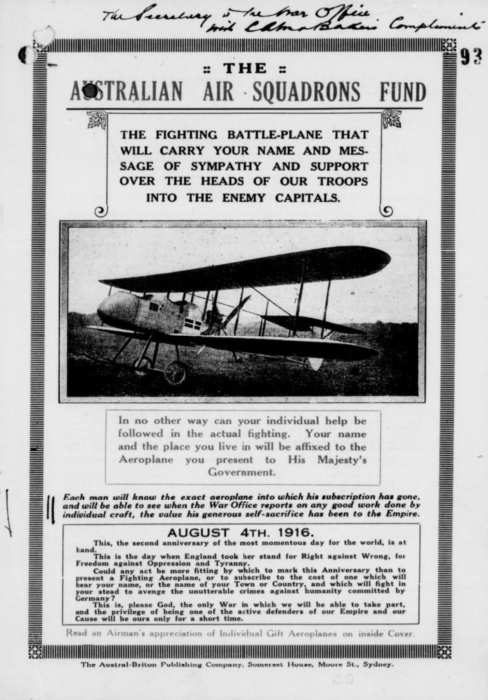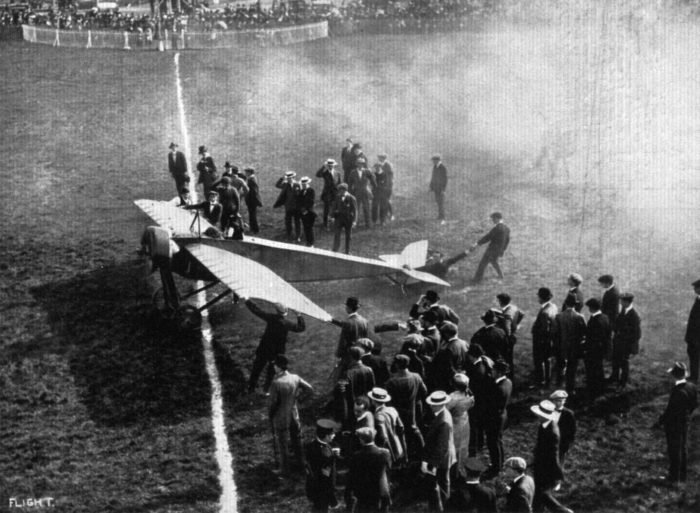On the evening of 23 June 1933, Berlin was raided by mysterious aeroplanes of unknown origin:
A number of aeroplanes, which were described as being of unidentified foreign origin, are reported to have flown over the working-class areas of the city yesterday evening, and dropped leaflets and pamphlets, in which the Government was attacked. Upon scout aeroplanes ascending the visiting 'planes disappeared.
Little information was given about the leaflets themselves, except that they were 'insulting [to] the Government in an incredible manner'. But that government -- the Nazi government, which had been in power for just under six months -- was quick to profess alarm:
the newspapers have been ordered to publish a police communique on the front page, accompanied by a statement by an official that the air raid emphasises Germany's helplessness in defending herself against attacks from the air. 'In this raid only papers were dropped; next time it may be gas bombs,' it is stated.
The foreign press was immediately suspicious:
It now appears, however, not only that no one saw the air raiders, but no one has even seen the Anti-Hitlerite leaflets that were supposed to have been scattered from the 'planes. The authorities at Weimar state that the raiders flew there also, and that hand-bills were found on the roof of the police headquarters. The authorities in Berlin say that copies of the leaflets fell on the various ministries.
As a British journalist commented acidly, 'apparently the machines flew at such a height that they were invisible, except to a few official eyes'. Even then, according to the 'air police at the Tempelhof Aerodrome (Berlin's Croydon) [...] nothing was known of such a raid'. And checks 'at various Continental aerodromes have failed to reveal any information of a 'plane having left to fly over Berlin'. The Evening News pointed out that
Not a single newspaper referred to the curious fact that nobody saw this fleet of aeroplanes anywhere on its way from some unstated frontier to Berlin, and nobody took the trouble to ascertain in which direction the aeroplanes went off after passing Berlin.
Although the newspapers were unanimous in saying that the machines were of a type unknown in Germany, and that they were seen by several experts, not a single particular about the points of difference in construction was given.
In the judgment of International Information (published by the Labour and Socialist International), the incident was a 'faked scare':
The whole swindle recalls only too clearly the fire in the Reichstag and the fable that French aeroplanes appeared over Nuremberg before the German declaration of war in the war of 1914-1918.
It's difficult to disagree. These aeroplanes not only never existed, nobody ever even seems to have thought they existed. They were not just phantom aeroplanes, then: they were phantom phantoms, concocted by the Nazi government and promoted by the German press. But to what end? I'll answer that question in a following post.
UPDATE: I found some more details of the supposed 'handbill air-raid':
Reports from Berlin state that the three planes, which were said to be double-deckers, of a type unknown to Germany, flew over the city on Friday afternoon, hurling down thousands of handbills, which contained abusive matter concerning the Hitler Government.
The weather was cloudy and the planes kept to a height of 10,000 feet and more. They were seen over Cottbus earlier in the afternoon, and later over Mannheim, going from the east to the west.
Similar machines were also reported over Thuringia and the Palatinate. Handbills similar to those dropped over Berlin were distributed over Weimar.








